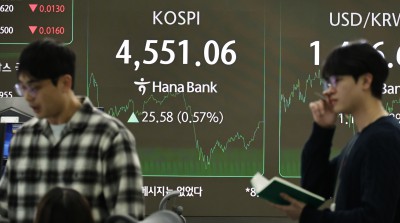At the Cato Institute Monetary Policy Conference, Washington, D.C.
November 16, 2006
The Conquest of Worldwide Inflation: Currency Competition and Its Implications for Interest Rates and the Yield Curve
I am delighted to speak at the Cato Monetary Conference. I have participated in a number of these stimulating conferences since I was in graduate school in the 1980s and have learned a lot from them as my thinking on monetary economics and monetary policy has evolved. Rather than focus on my intellectual journey, however, I would like to focus on a fundamental change that has taken place globally since I first spoke here roughly twenty years ago. In the United States and in virtually every country around the world, inflation has declined, and in most countries dramatically so. In addition, the volatility of inflation and expectations of future inflation have also fallen significantly. I will call these changes experienced around the globe the conquest of worldwide inflation.
I will begin by providing a few facts about the substantial improvement of inflation during roughly the past decade compared with the quarter century that preceded it. I will then try to understand why this remarkable decline in inflation has taken place. In particular, I argue that globalization, deregulation, and financial innovation, in part spurred by experiences of high inflation in the 1980s, have fostered currency competition that has led to improved central bank performance and, hence, the recent conquest of worldwide inflation. Friedrich Hayek had long ago advocated permitting greater competition among currencies, arguing that there would be a race to the top rather than a race to the bottom.1 Regardless of what one might think of Hayek's policy proposals, technological change in a globalized and competitive marketplace, I believe, has increased competition among currencies issued by central banks.
The increased competition among currencies has changed the ability and the incentives of governments and central banks to pursue high-inflation policies. As I will argue, such changes have allowed improvements in central bank independence, governance and credibility, thereby leading to better inflation outcomes. In addition, greater central bank credibility has allowed the development of long-term bond markets in many countries where such markets did not previously exist and flattened of yield curves around the globe as concerns about future inflation risks declined. Deeper bond markets with a wider range of available maturities encourage long-term planning and investment, and thus convey lasting gains, particularly in emerging markets. The important issue is whether the conquest of worldwide inflation will persist or be a temporary phenomenon.
The Worldwide Decline in Inflation
From the 1950s until the late 1960s, inflation rates were relatively contained, and episodes of high inflation were rare. Following the collapse of the Bretton Woods fixed-exchange-rate system in the early 1970s, however, inflation became a worldwide phenomenon. Even in Germany, where prices had been the most stable of any country in the world as tracked by the International Monetary Fund (IMF), the purchasing power of the deutsche mark declined by more than half between 1972 and 1995.2 For the United States, purchasing power declined more than 70 percent over this period. For roughly half of all countries reporting to the IMF, the erosion of value of the currency was more than 90 percent.
To express this erosion in terms of cumulative inflation, $370 would be required today in the United Sates to purchase $100 worth of goods and services at 1972 prices. Brazil has by far had the worst experience of any country in the world during this period: The price level in Brazil is approximately 5 trillion times higher today than it was in 1972.
Since the early 1990s, however, worldwide inflation has significantly declined. In the advanced economies, for instance, the median inflation rate has fallen from 7 percent in the 1980s to 2 percent in the current decade. In emerging markets, the median inflation rate has fallen from 9 percent to 4 percent over the same period. Indeed, the latest issue of the International Monetary Fund's World Economic Outlook shows that average inflation rates in both the advanced economies and the developing countries in recent years are at their lowest levels since at least the early 1970s.3 Indeed, the worst performers over the past five years have had inflation outcomes close to the average outcome in the 1970s.4 Thus, the worst inflation today is not nearly as bad as it once was.
To give some specific examples, just ten or twenty years ago, annual inflation rates in Brazil and Mexico exceeded 100 percent. But during the past five to ten years, Brazilian and Mexican inflation rates have remained low. In particular, inflation in Brazil failed to spike after Brazil experienced financial crises and sharp currency depreciations in the late 1990s. Given Brazil's history of hyperinflation, this stability is especially remarkable. Brazil did experience an uptick of inflation around its presidential election in 2002, but even this was minor by historical standards. This pattern of reduced inflation is seen across many countries, large and small, developed and developing.
The data thus clearly show that better inflation performance in the last decade is a worldwide phenomenon. But is this lower inflation regime likely to persist? One way to approach this issue is to investigate whether market participants appear to believe that this change is temporary or likely to last by examining measures of expected inflation. In the United States, where surveys go back furthest, long-term inflation expectations were as high as 8 percent in the early 1980s; they dropped to about 3 percent a decade ago and have since edged down a bit more, to about 2-1/2 percent, depending on your favorite measure of expectation.5 Over the past ten years, other advanced economies and a few emerging markets such as Korea have had a broadly similar experience.6
In Brazil and Mexico, for example, long-term inflation expectations have declined from a range of 7 percent to 10 percent a decade ago to a fairly steady 3 percent to 4 percent in recent years. Considering the high rates of inflation that these economies experienced not long ago, the low level and stability of long-term inflation expectations in recent years is remarkable. Indeed, few long-term inflation forecasts in any country currently exceed 5 percent, although Venezuela provides one counterexample, with a long-term inflation forecast now of 15 percent. Overall, these surveys suggest that market participants do expect low inflation to persist around the globe.
In addition, the risks of high inflation appear to have decreased as well. In particular, the volatility of inflation has declined notably almost everywhere. The standard deviation of inflation in the United States declined from as much as 4 percent in the early 1980s to around 1 percent a decade ago and has remained close to that level since then.7 Other advanced economies have had a similar experience. The decline in volatility is even sharper for the emerging markets. In the early to mid 1990s, the standard deviation of inflation in Brazil at times exceeded 100 percent and in Mexico it exceeded 30 percent. In the current decade, however, the standard deviation of Brazilian inflation has been relatively stable at around 5 percent, while the standard deviation of inflation in Mexico has declined steadily to around 2 percent, a level similar to that experienced in the advanced economies.
Factors Behind the Conquest of Worldwide Inflation
My brief review of worldwide inflation performance suggests that something has changed in the past decade compared with the previous two decades: Inflation is substantially lower and less volatile and expectations of future inflation are also substantially lower. What has driven this change, which I call the conquest of worldwide inflation?8 In understanding the key factors behind this change, we can also shed further light on the likelihood of whether this low inflation regime will persist.
In a nutshell, I believe that the factors of globalization, deregulation, and financial innovation, arising partly in response to episodes of high inflation, have effectively eroded the central bank monopoly on the provision of monetary services and have enhanced global competition among currencies. These changes have, in turn, altered the incentives for central banks to behave badly and for finance ministries to use central banks as "piggy banks" to finance their fiscal policies. The resulting constraint on monetary policy, combined with increased public understanding of the costs of inflation, have led to institutional changes in central bank governance that bolster their credibility for maintaining price stability in the future. Improved central bank performance and credibility, thus, are the consequences of this combination of factors.
To develop this explanation in more detail, I will start by describing how globalization, deregulation, and innovation can alter the ability and incentive of a government to pursue a high-inflation policy.9 These factors are closely related and mutually reinforcing in many respects. Prompted in part by the collapse of central planning, many countries have turned increasingly to private markets and trade to deliver growth and progress. The resulting deregulation and greater openness has boosted innovation and has helped to increase global competition, or globalization, by shrinking the barriers of time and distance. Accordingly, trade and financial linkages between countries have soared in recent years to record levels.
How does this affect inflation? When governments resort to printing money to finance their spending, inflation rises and nominal assets lose their value. This loss of value is also known as the inflation tax. Globalization, deregulation, and innovation make it easier for citizens to move their wealth out of nominal assets in the local currency should their government resort to an inflation tax. The demand for local currency has become much more sensitive to the inflation rate, and this greater sensitivity reduces the amount of real resources that the government can obtain for a given level of inflation. Therefore, the government has a reduced incentive to resort to the inflation tax.
The specific channels by which globalization, deregulation, and financial innovation affect competition among currencies are many:
Increased circulation of banknotes in dollars or other hard currencies enable citizens to conduct transactions and store liquid wealth without holding inflationary currency. The fraction of U.S. currency estimated to be held in foreign countries rose dramatically from less than 20 percent in 1980 to almost 50 percent in the late 1990s, and it has remained near this high level even as inflation rates have come down almost everywhere. About $350 billion of U.S. currency is currently held abroad, and this constitutes effectively an interest-free loan from the rest of the world to the United States.
Advances in electronic payments systems and trading systems, both retail and wholesale, enable consumers, investors, and banks to shift wealth cheaply and quickly away from currencies and assets subject to inflation and related risks. Over the past decade or so, many emerging-market economies have adopted technologies already in use in the advanced economies.10
As financial innovations such as credit card networks and money market mutual funds become more widespread, particularly in economies that had experienced high inflations, households and firms have been able to reduce their holdings of cash and central bank reserves, thus shrinking the "base" for the inflation tax.
Given such developments that facilitate competition among currencies, a government that pressures a central bank to pursue an inflationary policy gets much less benefit from increased inflation because people can more rapidly and conveniently switch out of the local currency. Indeed, the web site of the central bank of Brazil explicitly acknowledges the role of inflation in driving financial innovations that enabled firms and households to economize on cash balances in that country. It states, "Prior to the mid-1990s, [when inflation was stabilized] changes in the payment system in Brazil were motivated by the need to cope with high inflation rates. During that time, the system achieved significant technological progress, especially aimed at enhancing the speed of processing financial transactions."11
In addition to encouraging financial innovation, the painful experience of high inflation helped to educate the public and economists about the costs of inflation.12 Although the specific experiences differed across countries, almost everywhere public opinion eventually turned against allowing inflation to continue, and this public pressure reinforced the trend against inflationary policies. Economists and central bankers also devoted great attention to understanding the causes and consequences of inflation, providing the intellectual underpinning to policies oriented toward price stability.
In many countries, the factors I have discussed here led to changes in central banks that may make it more difficult to revert to high-inflation policies. The most notable change is the increased independence of many central banks and the correspondingly reduced control of the fiscal authorities over monetary policy. Central bank independence reduces the ability of a government to "rob the piggy bank" through a surprise inflation tax. In most cases, central bank independence can be reversed by a majority vote of the national legislature. But having to resort to such a vote is a greater obstacle to inflationary finance than that posed by previous arrangements, especially given the public's increased sensitivity and aversion to inflation.
Central bank independence has typically been granted in conjunction with an explicit mandate that makes the achievement of low and stable inflation one of the goals of monetary policy. Central bank independence, together with a mandate that includes price stability, increases the credibility of monetary policy. Policy is credible because the central bank's objectives are clear to the public and because the central bank can be held accountable for failing to achieve its objectives. When citizens are more aware of the costs of inflation, and when governments are less able to reap benefits from high inflation and thus have less incentive to use the central bank as a piggy bank, institutional reforms that make central banks more credible and independent are more likely to be adopted and sustained.13
The fundamental forces I have described today--globalization, deregulation, financial innovation, and public understanding about the costs of inflation--provided the impetus for fighting inflation and opened the political path to institutional reforms, such as central bank independence, that enhance central bank credibility. Once in place, these reforms made further progress against inflation easier and raised the costs of backsliding. As the benefits of stable prices accrue and as financial markets deepen and become more sophisticated, the benefits of sound economic policies will help to create support for institutional reforms that make returning to inflation harder--but not impossible--for future governments.
Implications of the Conquest for Bond Markets
What are the implications of the conquest of worldwide inflation for interest rates and yield curves? I believe that market confidence in continued low inflation has helped drive down the slope of the yield curve by reducing the premium demanded for holding long-term nominal assets. The conquest of inflation also has extended bond maturities and yield curves further into the future than ever before, most notably in many emerging markets.
The current low level of long-term yields in the United States and other advanced economies is widely acknowledged as somewhat of a puzzle, or, to use former Chairman Greenspan's term, a conundrum.14 Of course, flat and even inverted yield curves in advanced economies are nothing new. We know that the short end of the yield curve is dominated by monetary policy and cyclical factors.
To abstract from the potential effect of cyclical factors on the yield curve, consider the pattern of forward rates many years into the future, at which point the effects of current cyclical shocks would be expected to no longer be important. The yield on a ten-year bond, for instance, can be thought of as an average of a series of consecutive forward rates. If you could borrow and lend at the same rate as the U.S. Treasury, then you could lock in a three-month loan ten years from now by borrowing for ten years and three months and simultaneously lending the same principal for ten years. The difference between the interest you pay and the interest you earn on this transaction determines the implied forward rate ten years from today. The forward rate reflects not only the market expectation of the future short-term interest rate but also a "term premium" to compensate for the risk of a commitment to extend credit so far in the future, including the risk of future inflation.
At any point in time, then, we can calculate the short-term forward rate ten years ahead using the yield curve of U.S. Treasury coupon securities. This "far forward" rate has hovered around historically low levels of between 4-1/4 percent and 4-1/2 percent in the past year, more than 200 basis points (that is, two percent) below its average since 1990. Far-forward rates in other advanced economies have also declined over the past decade and are currently at or near historic lows.15
To some extent, low forward rates may reflect a persistent decline in expected future real rates of interest or in the real term premium. Chairman Bernanke has suggested that an excess of ex ante global saving relative to global investment has held down real interest rates around the world.16 Some of the factors behind this excess of saving over investment include the surge in revenues of oil and commodity exporters, a retreat in Asian investment demand from the boom that preceded the late 1990s, and a reduction in fiscal deficits in some Latin American countries. But these low bond yields also have a nominal aspect. The declines in inflation rates, in the volatility of inflation, and in surveys of long-term inflation expectations all point to a reduction in the compensation required by investors for the effects of future inflation on the returns to holding long-term bonds.
This development is particularly remarkable in many emerging markets, in which longer-dated fixed-coupon bonds issued in local currencies had ceased to exist during the inflationary 1970s and 1980s. The recent lengthening of maturities of domestic-currency-debt markets has, in many cases, not only extended the yield curve but--and this is one of the key results of the conquest of inflation--effectively created a local-currency yield curve that previously did not exist.
Since 2000, ten-year nominal fixed-coupon bonds in the local currency have been introduced in Brazil, Chile, Colombia, Indonesia, Mexico, and Russia. Korea and Thailand introduced ten-year fixed coupon bonds in the 1990s. This year the government of Mexico issued a thirty-year fixed-coupon bond in pesos for the first time. The proportion of local-currency debt in Mexico maturing within one year was nearly 90 percent in 2002 and is now less than 75 percent.17 The Korean government continues to increase the proportion of its domestic currency debt in longer maturities, with the one-year-and-under segment falling from roughly one-half in 1999 to one-quarter by the end of last year. Moreover, maturity extension is not limited to emerging markets. France and the United Kingdom, for example, issued fifty-year bonds last year.
In addition to the development or extension of a yield curve worldwide, bond yields have tended to be relatively low and flat, at least in part because of the conquest of inflation. The flattening or slight inversion of yield curves in the major industrial economies, such as the United States, Japan, the euro area, the United Kingdom, and Canada is well known. For example, ten-year yields in the euro area are less than 50 basis points higher than three-month yields and the yield curve is currently downward-sloping in the United Kingdom.
At the same time that maturities have been extended, bond yields in local currencies of emerging-market countries have also declined. It is perhaps not surprising that, given their high rates of saving and generally high level of economic development, the governments of Hong Kong and Korea can borrow at levels close to those in the advanced economies. More notable, however, is that the Mexican government can borrow in pesos at a thirty-year maturity at only 8 percent. Although Mexico is perhaps the most striking example, it is not alone. Other middle-income emerging markets with single-digit yields on fixed-rate ten-year bonds in the local currency include Chile, Colombia, Malaysia, Russia, and Thailand, to name but a few. The computation of forward rates for most of these countries is difficult due to the relative sparseness of the maturity distribution, but for those countries in which five-year forward rates can be computed, they have been declining and have reached very low levels in the past year or so.
Overall, the combination of lower and less volatile inflation around the world has led to a reduction in inflation expectations and lower perceived inflation risk, and hence to a lower premium in long rates for inflation uncertainty. I believe that these factors have been important contributors to the lower long-term yields and the flattening of yield curves, particularly in emerging markets. The establishment of markets for long-term nominal government and corporate debt in countries in which they did not exist a decade ago is powerful evidence of the faith that investors place in a future environment of price stability.
Broader Economic Benefits
The economic benefits of price stability are too numerous and well known for me to cover here in detail. Long-run price stability certainly is essential for achieving maximum employment. However, I would like to underscore some benefits that are often overlooked, related to the development of markets for long-term bonds.
Price stability boosts growth by deepening financial markets. Given stable prices, savers and investors have more confidence about the ultimate value of their investments. Stable prices encourage the growth of financial intermediaries and financial markets. As I have discussed, many emerging markets have recently experienced a deepening of their local financial markets through a greater issuance of longer-dated paper. There is a strong positive link between banking and financial market development and economic growth, and a number of studies have concluded that banking and financial market development is a key driver of economic growth. Thus, greater central bank credibility, which permits more development of local financial markets, can have an economic benefit beyond the financial sector.18
The development of long-term local-currency bond markets may also help to enable governments and firms to plan long-term infrastructure and investment projects that boost economic development. Although such debt markets are only one of many factors that can help to lower the costs of long-term planning and enhance the ability to undertake long-term investments, such developments can improve decisionmaking. In particular, investment decisions are less likely to be constrained by having only short term financing available for longer-term projects, thereby allowing improved decision making, for governments, firms, and individuals.
Higher and more stable growth combined with better ability to undertake long-term plans can help to improve the fiscal outlook for a country. A better fiscal outlook, in turn, increases confidence and financial market development and thus further boosts growth and, in a virtuous cycle, reinforces prospects for continued price stability. More-prudent fiscal policies, including lower deficits, longer debt maturities, and reduced foreign-currency debt can reduce the likelihood and potential severity of financial crises. These policies make the financial positions of emerging-market governments less vulnerable to movements in interest rates and exchange rates. A reduction in the perceived risk that a government may not be able to service its debts makes changes in investor sentiment and financial contagion less likely, thereby reducing financial market volatility.
Maintaining Progress on the Conquest of Worldwide Inflation
I have argued that globalization, deregulation, and financial innovation, in part spurred by recent experiences of high inflation, have fostered currency competition that has led to improved central bank performance and, hence, the conquest of worldwide inflation. The resulting enhancement of central bank governance and credibility has allowed the development of long-term bond markets in many countries and flattening of yield curves around the globe.
I want to conclude by returning to the question of whether these phenomena are likely to persist. Globalization and innovation are genies that may prove difficult to put back in their bottles. Deregulation and global competition, however, may be more subject to change.
Although I am an optimist, I would be remiss if I did not point out some risks to this otherwise cheerful narrative of conquest. The difficulty of reaching agreement in the Doha Round of trade negotiations highlights the risk of renewed protectionism and backtracking on deregulation. Trade barriers and regulations are anathema to globalization and competition. Barriers to the free flow of goods, services, capital, and technology would also diminish the force of innovation that has been so beneficial in the struggle against inflation. Transactions taxes and administrative barriers may hinder the development and liquidity of bond markets and there is still much progress that is required in many emerging markets on these fronts.
High inflation can destroy an economy and result in enormous hardship for everyone involved. The benefits achieved through greater central bank credibility are substantial. Fortunately, economic forces have led to better central bank behavior around the world during the past decade. If citizens and politicians lose sight of these benefits and the forces that have led to enhanced currency competition are thwarted, these gains could prove fleeting. I believe that we must continue to work hard to lock in the gains achieved through anti-inflation credibility to ensure that the conquest will be long lasting. The lessons of the high inflation episodes are too important to forget.
--------------------------------------------------------------------------------
Endnotes
1. Friederich A. von Hayek (1976), Denationalization of Money: An Analysis of the Theory and Practice of Concurrent Currencies (London: Institute of Economic Affairs).
2. Based on changes in consumer prices, 1972 to 2005, from the International Monetary Fund, International Financial Statistics.
3. The IMF does report, however, some modest upward pressure during the past year or so.
4. The worst performers are defined as the 90th percentile of inflation rates across countries, from the IMF, International Financial Statistics. The typical outcome is defined as the 50th percentile.
5. Data are from the Federal Reserve Bank of Philadelphia, Survey of Professional Forecasters.
6. The sample of foreign advanced economies consists of the euro area, Japan, and the United Kingdom. The sample of emerging-market economies consists of Brazil, China, Korea, and Mexico. Long-horizon forecasts refer to six-year- to ten-year-ahead forecasts from the April and October surveys of Consensus Economics.
7. Volatility is defined as the twenty-quarter rolling standard deviation of the annualized inflation rate.
8. I have borrowed my title from Thomas J. Sargent (1999), The Conquest of American Inflation (Princeton: Princeton University Press). Sargent focuses on the issue of central bank learning about evolving economic behavior in a statistical setting, and he does not directly analyze the institutional and regulatory changes that may be associated with this behavior.
9. This section draws on aspects of my presentation at a May 2001 conference at the Federal Reserve Bank of Cleveland and on my June 2006 speeches in New York. See Randall S. Kroszner (2003), "Currency Competition in the Digital Age," in David E. Altig and Bruce D. Smith, eds., Evolution and Procedures in Central Banking (New York: Cambridge University Press), pp. 275-99; and Randall S. Kroszner (2006), "Why Are Yield Curves So Flat and Long Rates So Low Globally?" remarks at the Institute of International Bankers, New York, June 16. Kenneth Rogoff proposed another effect of globalization on inflation at the 2003 Jackson Hole conference sponsored by the Federal Reserve Bank of Kansas City. According to Rogoff, greater competition leads not only to lower but also to more-flexible prices. When prices are more flexible, a central bank's ability to temporarily influence output is diminished, while its influence on inflation is enhanced. Thus, more-competitive markets naturally help central banks achieve price stabilization. See Kenneth S. Rogoff (2003), "Globalization and Global Disinflation," (237 KB PDF) in Monetary Policy and Uncertainty: Adapting to a Changing Economy (Federal Reserve Bank of Kansas City), pp. 77-112.
10. For example, over the past ten years, most major emerging-market economies have implemented real-time gross settlement payment systems, which allow markets to rapidly settle payments and other obligations with finality during the day. See Morten Bech and Bart Hobijn (2006), "Technology Diffusion within Central Banking: The Case of Real-Time Gross Settlement," Federal Reserve Bank of New York, Staff Reports No. 260.
11. http://www.bcb.gov.br/?PAYSYSREFORM
12. This hypothesis was raised in the discussion of Rogoff (2003). See Guillermo Ortiz, chair, "General Discussion: Globalization and Global Disinflation," (120 KB PDF) in Monetary Policy and Uncertainty: Adapting to a Changing Economy (Federal Reserve Bank of Kansas City), pp. 119-30. For evidence that voters in Latin America in recent years have punished politicians for bad inflation outcomes, see Eduardo Lora and Mauricio Oliveira (2005), "The Electoral Consequences of the Washington Consensus," Economia, vol. 5 (Spring), pp. 1-61.
13. In a paper with Douglas Irwin, I documented a similar dynamic at work in the gradual reversal of protectionist policies in the United States in the 1930s and 1940s. See Douglas A. Irwin and Randall S. Kroszner (1999), "Interests, Institutions, and Ideology in Securing Policy Change: The Republican Conversion to Trade Liberalization after Smoot-Hawley," Journal of Law and Economics, vol. 42 (October), pp. 643-73.
14. Alan Greenspan (2005), statement before the Senate Committee on Banking, Housing, and Urban Affairs, presenting the Federal Reserve Board's "Monetary Policy Report to the Congress," February 16.
15. Far-forward rates in yen are up about 1 percentage point from their historical lows associated with the Japanese deflation scares of 1998 and 2003, a level obviously still low in historical context.
16. Ben S. Bernanke (2005), "The Global Saving Glut and the U.S. Current Account Deficit," Sandridge Lecture at the Virginia Association of Economics, March 10.
17. I have included floating-rate debt in the one-year maturity category.
18. See Ross Levine (2005), "Finance and Growth: Theory and Evidence," Philippe Aghion and Steven Durlauf, eds., Handbook of Economic Growth (New York: Elsevier); and Randall S. Kroszner and Philip E. Strahan (2006), "Regulation and Deregulation of the U.S. Banking Industry: Causes, Consequences, and Implications of the Future," unpublished paper.
























